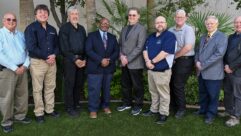One in a series of responses from readers to RW’s Sept. 1 article exploring whether AM radio is “still relevant.”

I find it incredible that so much effort is being put forth to constantly belittle AM.
I read an article written by Randy Stine, who I have no idea who he is. About AM radio! The question is simple. Does he own one? Is he invested in one? Does he sell advertising on one? And if he does not, what in the world is he beating his gums about?
As Stan Salek reflected, it’s not the first time that people have claimed AM is dead. Combination owners are to blame in a lot of cases. When they instruct their salespeople not to worry about AM, just sell FM. Single standalone FMers spend an inordinate amount of their time knocking AM radio. Even the NAB, which argues AM isn’t being left behind, are responsible for the greatest damage to the spectrum when they wrote off the Kahn Stereo system in favor of the flawed C-Quam system and now they’re ready to begin again by trying to have the AM band go IBOC digital.
We are running a very successful AM station; but over the 47 years we have run this station, we have constantly improved the facility from a lowly beginning of 100 watts on 1240 to our current position 40,000 watts on a half-wave antenna on 870 kc. It is hard to compete with 100,000 watts of FM when you only have a 1 kW AM station. I have often thought it’s really upside down. The FM stations should be limited to 50,000 watts and the AM stations should be allowed to have 100,000 watts. You can bet your sweet bippy that would level the playing field.
I just wonder where we could have gone if, back in the’60s, the clear-channel 750,000 watt proposal would have been granted.
It is true that many operators have not worked to improve their facilities or maintain them. I applaud KGLB at Glencoe, Minn., and WMVP in Chicago for their efforts to improve.
Three years ago, we took our 1600 kc station at Walker, Minn., moved it to 1570 and increased the daytime power to 10,000 watts along with a new tower, new transmitter and better ground system.
This station is struggling because its former owners prostituted the hell out of it by reducing its modulation to 10 percent in order to save power. They also ran 47 watts at night and simulcast with their FM by putting a microphone in front of an FM radio. You could listen to the background conversation in the studio quite often.
When we took over the facility, field strength at a mile was 16 mV. Three days later, after we removed a single shunt wire and installed a folded unipole, our measurements netted 65 mV at a mile.
The purchase and the reclaiming of this station is a virtual story of many AM operations yet everyone is convinced that AM’s problem is AM. Not hardly!
“Quick fix.” Operators do you know you can go plus or minus three channels without a bunch of monkey business? Have your consultants look at it. Maybe there’s a power improvement of the daytime or, at the very least, a nighttime power improvement; and then if we could only change the stereo standard to the Kahn system and encourage or mandate AM radios that would receive the same; and above all, if we could muzzle the critics that are not involved and truly don’t have a clue.
Ed De La Hunt is president/general manager of KK Radio Network in Park Rapids, Minn.












